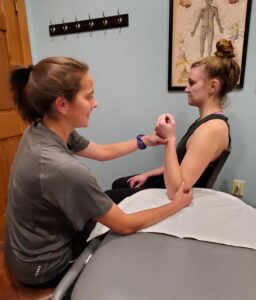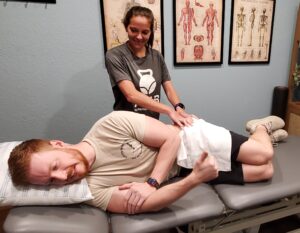Health & nutrition insights.
What Should I Wear To Physical Therapy?
What Should I Wear To Physical Therapy?
If you are new to physical therapy, you probably are wondering what should I wear to physical therapy treatments. It’s one of the most common questions patients ask, and it’s an important one because having on the correct attire can help your therapist easily evaluate and treat your injury. Some things to consider are:
-
Comfort – This is a number one priority at physical therapy. Clothes that are clean, loose, breathable, and soft are best. Try to avoid zippers or lots of buttons that may be uncomfortable or dig into your skin as you move.
-
Room to move – At your first visit, your physical therapist will evaluate your injury by having you perform certain movements, actively and passively. You may also be asked to perform stretches and exercises as part of your treatment plan.
-
Access to your injury – wear clothing that allows your therapist to access your injury easily

Easy access to the injury!
Clothing For Upper Body Injury/Pain
For shoulder, neck, or upper back pain it is best to wear a loose fitting t-shirt or a tank top. Most bras would work; however, if the injury is between the shoulder blade (scapula) and the spine, a regular bra may be easier to work around than a sports bra.
Clothing For Lower Body Injury/Pain
Knees, legs, hips, lower back and pelvis injuries are best addressed with loose fitting shorts that have an elastic waistband. While fitted athletic leggings are very comfortable, they are difficult to roll up or down.

Loose shorts with an elastic waist band
What About Shoes?
Shoes should be comfortable, supportive, and fit well. You may be asked to walk, run, jump, squat, hop, or perform other functional movements as part of your evaluation. Sneakers, athletic shoes,or flats work best. These types of shoes promote a more natural posture and gait.
Recommended Clothing
-
Loose T-shirt or tank top
-
Loose shorts or pants with an elastic waist band
-
Hair tie
-
Athletic shoes
-
Socks
What Not To Wear
-
Jewelry – especially long necklaces
-
Tight fitting shirt
-
Tight pants or leggings – Preferably no high-waist leggings if we are treating a lower back or hip injury
-
Open toed shoes, heels, boots, or sandals
